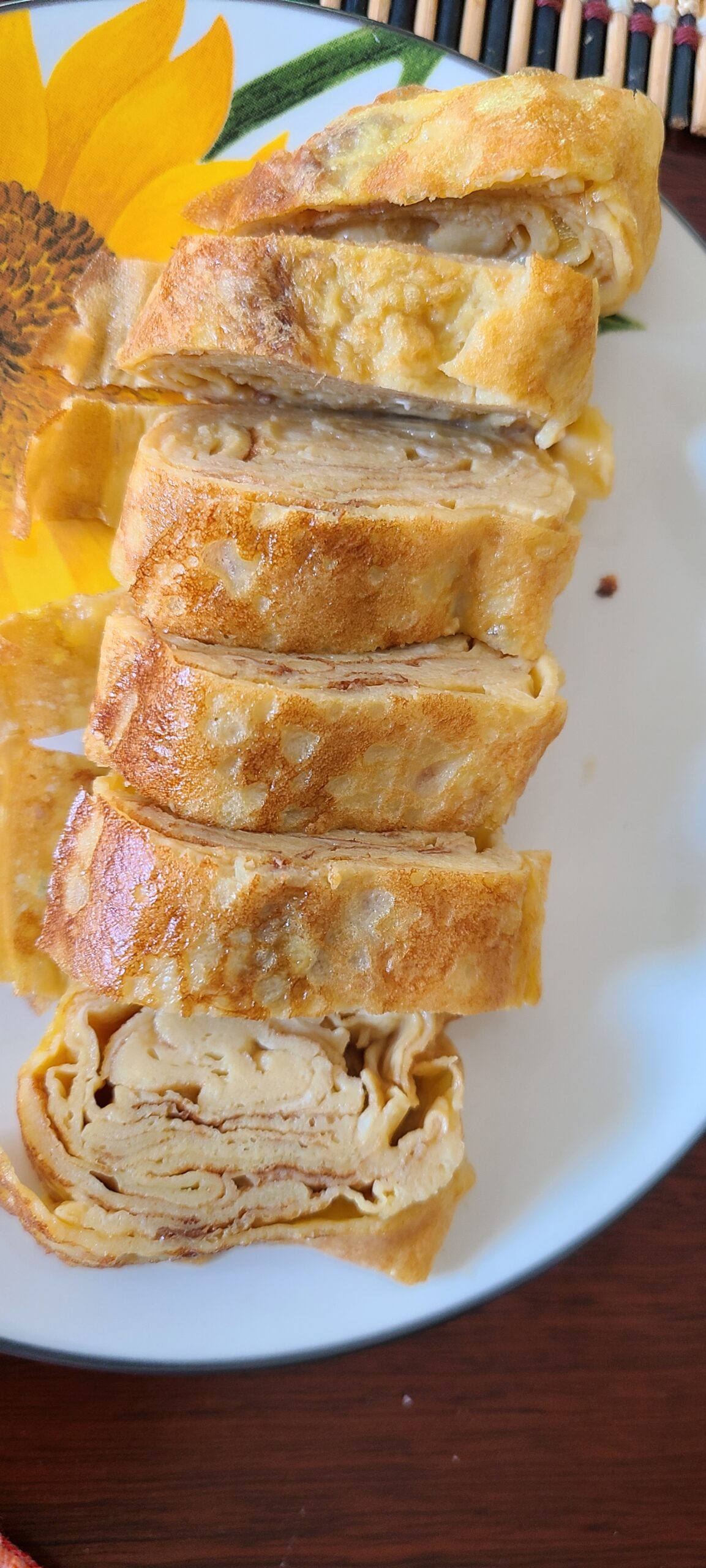I absolutely love tamagoyaki. It is a sweet eggy custardy treat for a lazy Saturday morning. A family favorite and we make it more often than we ought.
Tamagoyaki is a pretty simple treat to prepare. While you would ideally have a rectangular tamagoyaki pan to make this one, I have been constrained by diktat from spending any more monies on single purpose kitchen cookware. I may sneak it into the shopping cart at the next H mart run. No guarantees.
There are as many recipes as there are regions in Japan. The recipe below is our go-to. Frankly I think having a little dashi in the recipe is pretty good, but I’d be careful and not overuse that. The one time we did, it tasted pretty fishy. Even so, we also notice that the flavor fades as the tamagoyaki cools, so all is not lost if you happen to tip in a bit more than you’d have liked to.
Recipe (Updated)
4 eggs
1-1.5 tbsp sugar (depending on type of sugar)
1/2 tsp soy sauce
1/4 tsp salt (we used flaky sea salt)
7 tbsp water
1/4 tsp dashi stock (instant msg free is the one we used – adjusted for less fishy flavor)
neutral flavor oil like canola to wipe the pan
Recipe (old)
4 eggs
2 tbsp sugar
2 tsp mirin
2 tsp white wine or sake
4 tbsp water
1/4 tsp dashi stock (instant msg free is the one we used – adjusted for less fishy flavor)
pinch of salt
Method :
Update : We changed the recipe pretty significantly. We tried many on the internet over the intervening months, and found that simpler is better. We also found that adding a bit more water makes the tamagoyaki a bit more custardy and less eggy (which we like). If you prefer the mille-feuille type tamagoyaki (firmer with more distinct layers and more eggy, you can reduce the water and add more egg). We also noted that cutting back the sugar helped with making it feel less desserty. I think 1 tbsp is the sweet spot but you could increase depending on what you are serving it with. The method remains the same as below.
Beat all the ingredients together use a small fork or chopsticks to break and better incorporate the ingredients. Heat a medium sized non stick pan to medium high heat and adjust later. Use some neutral flavored oil applied with a paper towel in an even layer, to ensure the egg releases.
Start with a reasonably thick first layer and thinner layers after that (while the bottom layer sizzles, you still need some liquid moving around). Also, after every layer is poured, take it off the heat to spread it and to roll it, then back on high heat to reheat the pan to get the sizzle for the next layer.
So pour a layer enough to coat the base of the pan. You have to use a combo of silicone spatula and some pokey stick (chopsticks) to roll if you use a round pan. Once you have it rolled to one side of the pan, regrease the pan, pour the next layer in the open space, and slightly lift the roll on the other side and scooch the egg mixture under it as well. We tried adding seaweed between the layers but it just didnt work to our tastes (too fishy tasting). Also, we really need a tamagoyaki pan.
Happy Cooking, and Happy Eating :).

